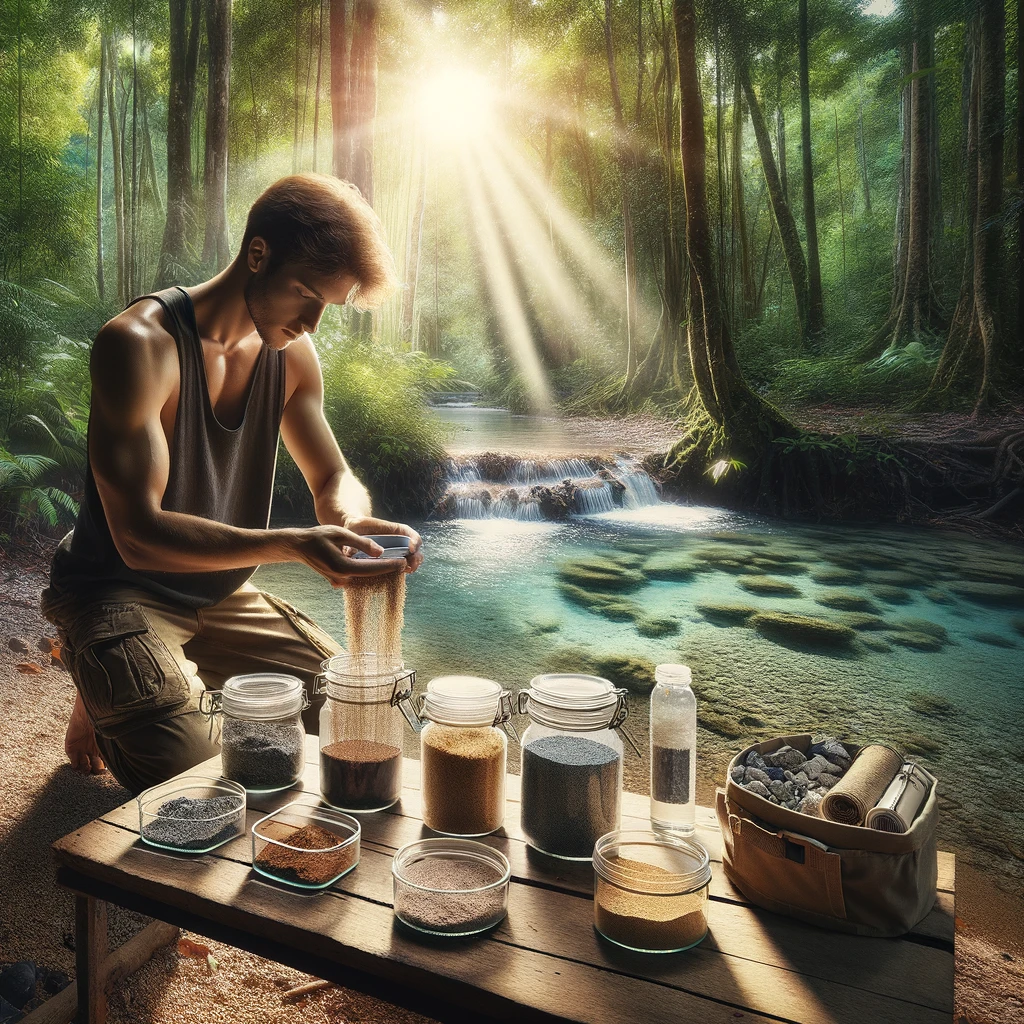Access to clean drinking water is essential, especially in emergency situations or while enjoying outdoor activities. However, there are times when you might find yourself without a conventional filtration system. In this post, we’ll explore how to construct a simple but effective water filter using materials that can often be found in nature. This skill is invaluable for campers, hikers, and anyone interested in sustainable living practices.
Materials Needed
List of Natural Materials:
- Sand: Coarse and fine grains.
- Gravel: Small pebbles or stones.
- Charcoal: Burnt wood, preferably from hardwood.
- Cotton Cloth: For fine filtration (optional).
- Container: A plastic bottle or bamboo segment.
Sources:
You can gather sand and gravel from a stream or dry riverbed, where it’s usually cleaner. Charcoal can be made by burning wood in a controlled environment and collecting the charred remains.
Step-by-Step Guide to Building the Filter
Step 1: Collecting Materials
Ensure that the sand and gravel are clean. If you’re using found charcoal, crush it into small pieces to increase its effectiveness.
Step 2: Assembling the Filter
- Container Preparation: Cut the bottom off a plastic bottle or use a hollow bamboo segment. If using a bottle, remove the cap or puncture it for water flow.
- Layering the Materials:
- Place a piece of cotton cloth or coffee filter inside the neck of the bottle to prevent sand from escaping.
- Add a layer of crushed charcoal to serve as the primary filtration barrier.
- Above the charcoal, add a layer of fine sand, then a layer of coarse sand.
- Top these layers with gravel. The largest pieces go in first, followed by smaller ones.
Step 3: Filtering the Water
Pour water slowly into the top of the filter and let it drip out of the bottom. Initially, run several batches of water through the filter to clear out any loose particles.
Testing and Using the Water Filter
Safety Tips:
This filter will help reduce debris, some bacteria, and improve the taste of water, but it’s not foolproof against all pathogens or chemicals. For the safest results, boil any filtered water before drinking.
Maintenance:
Replace the charcoal and sand layers periodically to maintain the filter’s effectiveness, especially if the water starts to taste or smell odd.
Additional Tips
Improving Filtration Efficiency:
Adding multiple layers of sand and charcoal can increase the filter’s ability to remove contaminants. Additionally, placing a layer of small rocks at the bottom of your filter can help prevent clogs in the output.
Common Mistakes:
Avoid using saltwater as the salt will pass through the filter. Also, ensure not to compact the layers too tightly as this can slow the filtration process.
Conclusion
Building a water filter using natural materials can be a life-saving skill in emergencies and a great project for anyone interested in sustainable practices. It’s a straightforward process, but remember that this DIY filter should be used as a part of a comprehensive water purification strategy.



